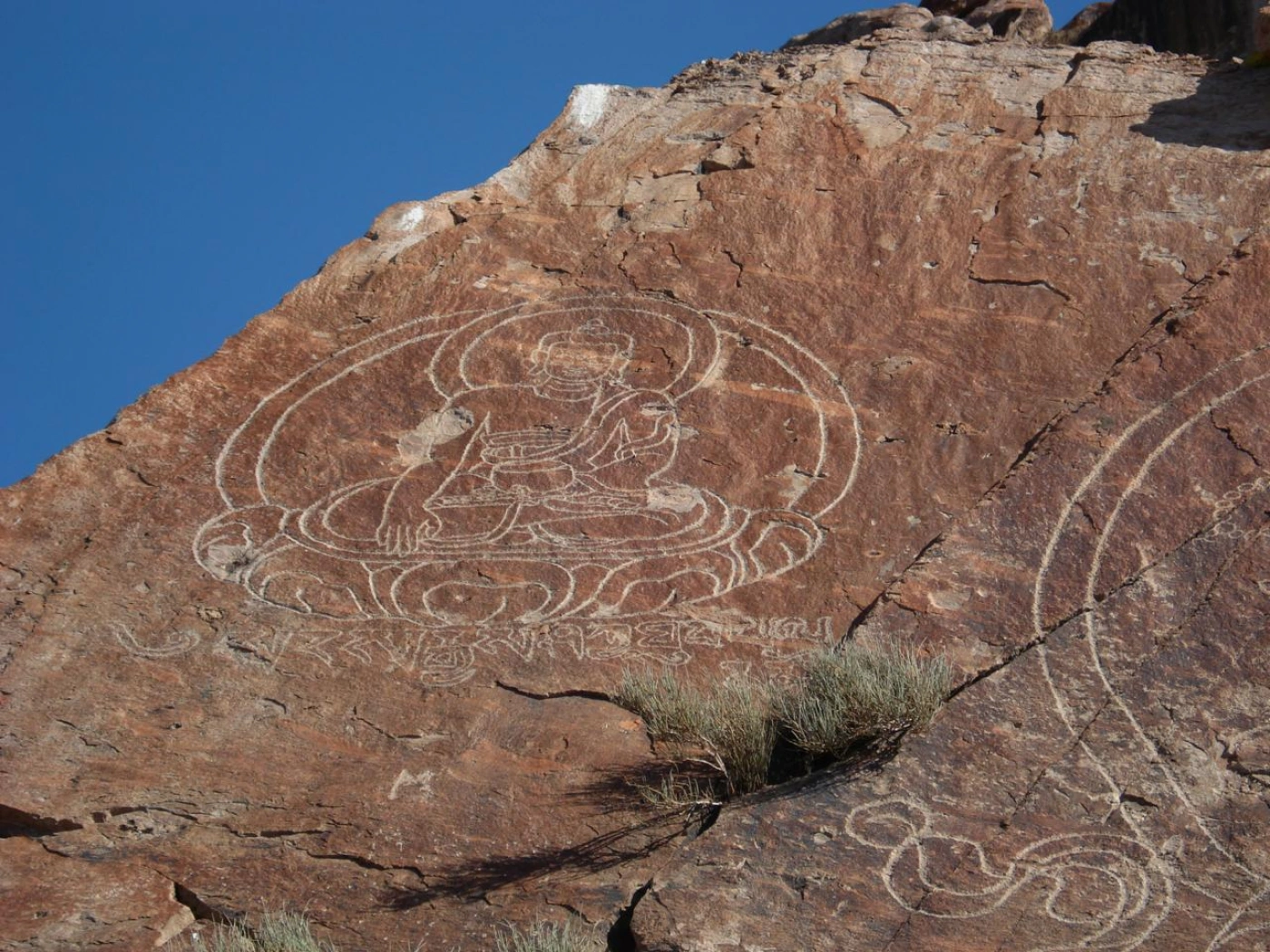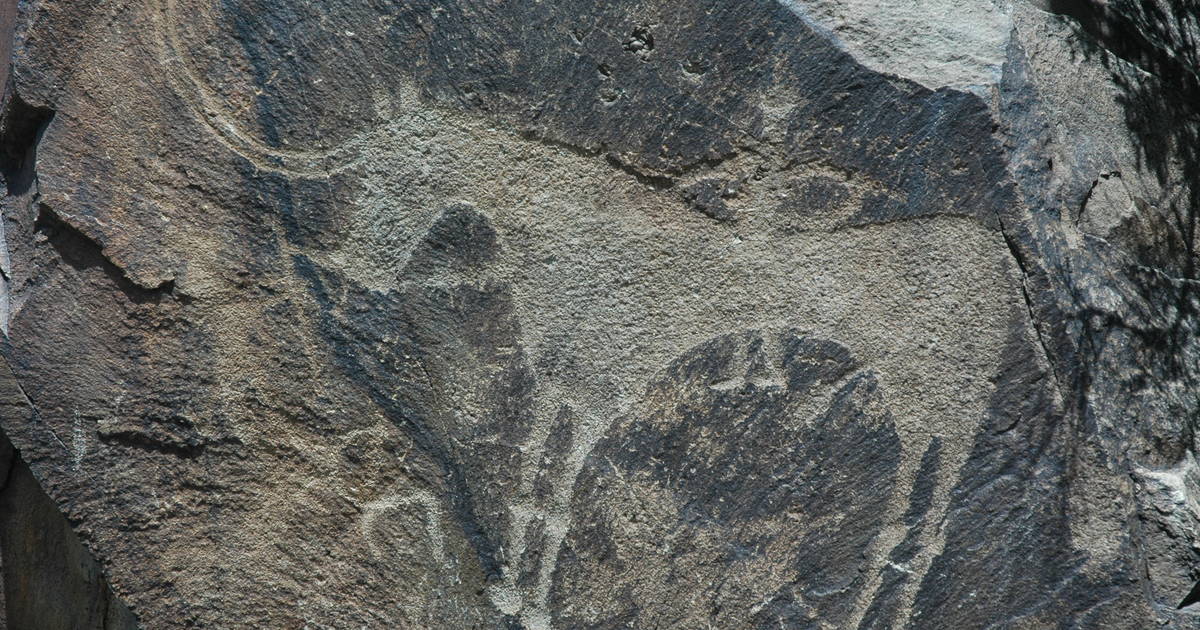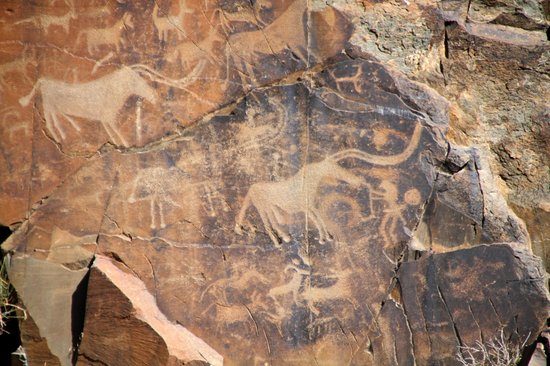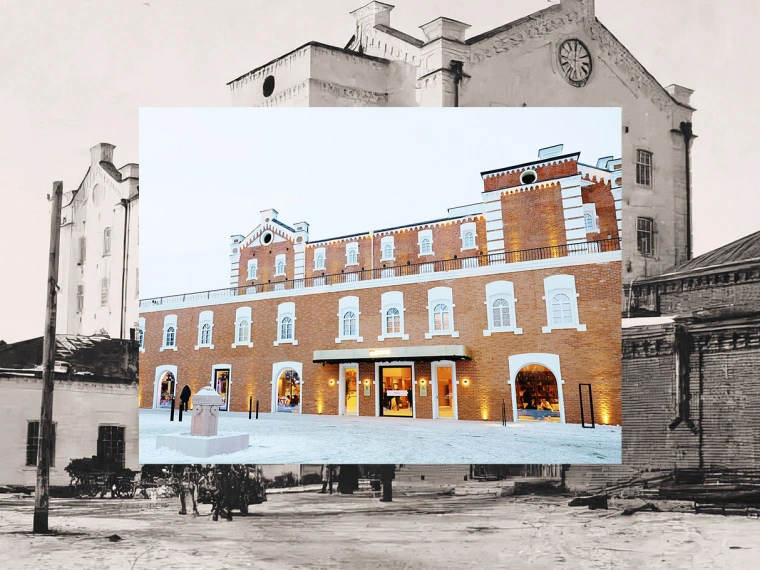
Tamgaly Petroglyphs: Kazakhstan’s Cultural Treasure
Rock art has captivated scholars for years as it is considered to be the evidence of some of the first man-made art. Because some rock carvings come from prehistoric art, it is challenging to determine the source, date, meaning, and purpose of the art. Archeologists identified three categories of rock art, including pictographs, earth figures, and petroglyphs.
Petroglyphs are rock paintings made by applying a stone chisel or a hammerstone directly on the rock surface. When the patina — a thin outer layer on the surface of rock — comes off, a lighter rock underneath is exposed, creating a petroglyph. More rarely, petroglyphs are created through scratching rather than carving the stone surface.
The oldest petroglyphs date as far back as the Neolithic — the final division of the Stone Age that began 12, 000 years ago — and late Upper Paleolithic, which is the third and last subdivision of the Old Stone Age that dates back to over 12,000 years ago. Petroglyph sites have been detected in various places all over the world, Kazakhstan and Western Central Asia being two of them.

Image: UNESCO
Kazakhstan’s primary petroglyph site is Tamgaly, located in Zhetysu. Zhetysu translates to «sever rivers», which is a tribute to the rivers that flow from the southeast into Lake Balkhash. Remarkably, Tamgaly became a UNESCO World Heritage Site in 2004. Scientific American explains that in order to be granted a UNESCO heritage status, the monument, art piece, or natural formation must be of «Outstanding Universal Value from the aesthetic point of view».
According to UNESCO’S Operation Guidelines, a heritage site must «transcend national boundaries and be of common importance for present and future generations of all humanity».
UNESCO also adds that the «Archeological Landscape of Tamgaly features a remarkable concentration of some 5,000 petroglyphs, associated settlements, and burial grounds», which highlights the site’s high potential to reveal the historical development of Kazakhstan’s nomadic ancestors.
The carvings differ in degrees of visibility: the light grey ones are the more recent ones, while the darker ones could date as far back as the Bronze or Iron Age. A paper on rock art in Central Asia writes that the archeological treasures found in Tamgaly date «from the middle of the 14th—13th centuries BC until the turn of the 19th—20th centuries AD».
The paper stresses the fact that Tamgaly Bronze Age petroglyphs are «unique in Central Asian rock art» due to their distinguishably large size, bold naturalistic style, and elaborate subjects that include anthropomorphic solar deities, camels, and more. In and of itself, Tamgaly petroglyphs are a fundamental part of Kazakhstan’s and Central Asia’s cultural landscape.

Image: Trip Advisor
More to explore:
Snow Leopard of Central Asia: Mysterious Life of a National Symbol
Did Kazakhstan’s Lake Zaysan Outlive the Dinosaurs?
Drinks of the Steppes: Everything You Need to Know About Ayran, Kumis, and Shubat





